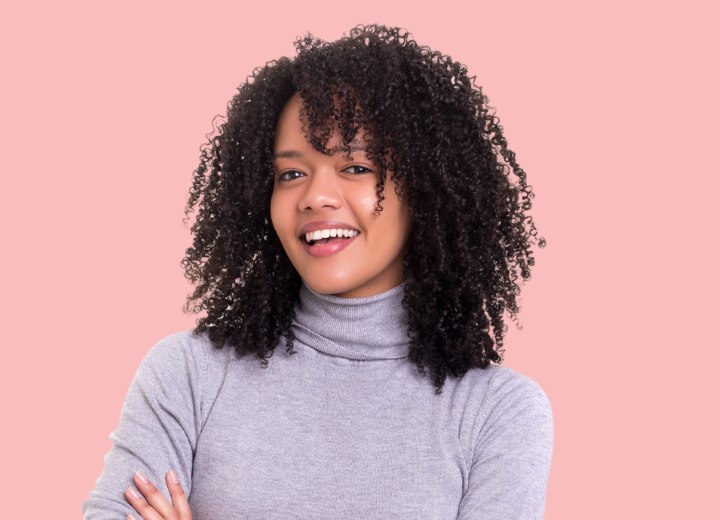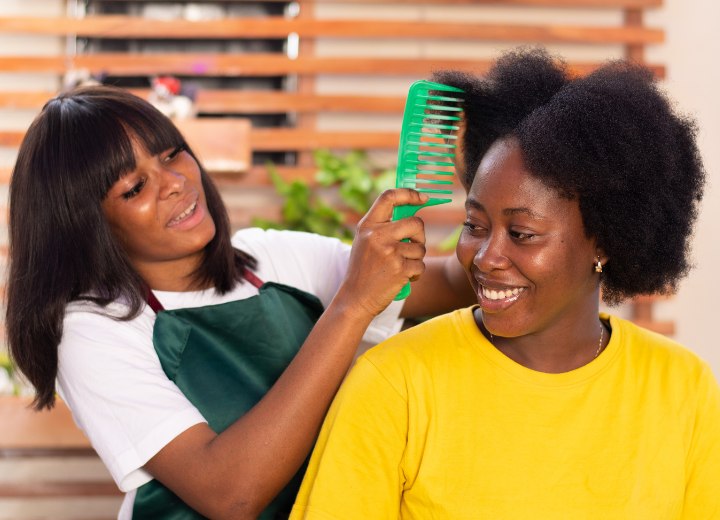African-Ethnic Hair

First of all, let me say that I am Caucasian and I was in grade school in the 1970s. I was always fascinated by my African-American classmates, especially their hair. It was very different from mine – which at the time was fine in texture, straight with a cowlick over my left eye, and pale, yellow-gold in color. Two of my closest friends in class were Rhonda and Eldred, and these were the first two people of color whose hair I was allowed to look at up close.
In second grade, you don't understand things like "relaxers" versus "natural". All I knew was that Rhonda's and Eldred's hair was very different and seemed to be able to do a lot more things than mine could.
Eldred's hair was sometimes braided (he referred to it as plaiting), but usually worn loose in an "afro". He would keep his comb or pick tucked into his hair, where it stayed in place magically. He also did this with pencils, to my great envy. I used to try these things with my own hair, and of course, it never worked for me.
As amusing as all this is, it taught me from an early age that there were fundamental differences between "white" hair and "African-ethnic" hair. Of course, it wouldn't be until decades later when I began studying and practicing as a cosmetologist that I would learn the precise differences in the hair of various ethnic groups.
{Author’s Note: I am using the term "African-Ethnic" to denote the hair of people whose ancestry is of African descent. Since this website is visited by people from all over the world, many of whom are of African descent but are not American, I feel it is inappropriate to use African-American in this instance.}

Contrary to what many people believe, there is a wide range of textures and wave patterns to be found among those with African-ethnic hair, even before considering those whose racial ancestry is mixed.
The hair can be fine or coarse in texture (meaning that the diameter of the hair shaft is either smaller or larger), and the wave pattern can be winding strands, tight coils, or zigzag strands. These are all found in what is referred to nowadays as "natural" hair. We will discuss the need for the term "natural hair" more later. There are a couple of traits that tend to be common among all African-Ethnic hair types. These are:
Tighter cuticle layer
African-ethnic hair tends to have a more compacted cuticle layer, which makes it more resistant to moisture and allows it to retain moisture better. It also gives the hair strands a shiny or glossy appearance, which is why some people presume that African-ethnic hair is oilier than other hair types.
Unique Styling Abilities
Because of the wave patterns found in African-ethnic hair, it is uniquely suited to several styling techniques that are not readily possible with other hair types without pre-processing and manipulation.
Twisting, plaiting, dreadlocks, and similar techniques are all easily achievable with African-ethnic hair in its natural state, providing a near-infinite array of looks. The ease with which African-ethnic hair can be twisted and braided also lends itself to ease in incorporating additional hair into the natural hair (braided extensions).
The state of African-ethnic hair tends to make it respond better to traditional styling methods, such as roller sets and curling irons. All seem to work better with African-ethnic hair. Of course, this is my opinion. I like the crispness of the curls that can be created in African-ethnic hair with a hot curling iron. I love the satin-like sheen of the finished hair.
Continue reading ...